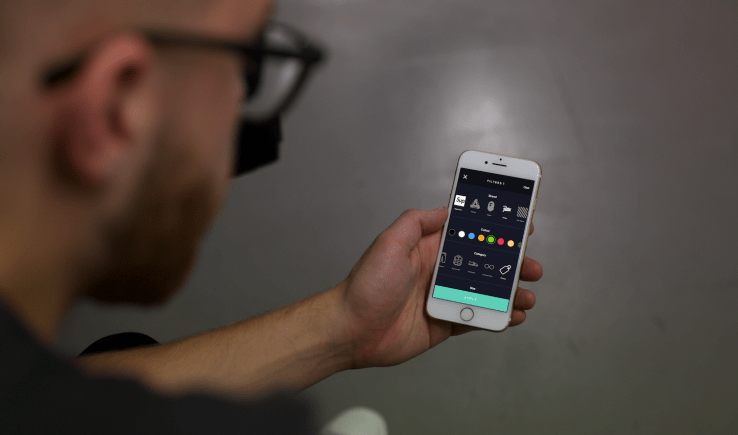Bump is a peer-to-peer marketplace for streetwear

As the streetwear and sneaker industry continues to explode in popularity, we’re seeing more and more startups popping up to service the industry — all from slightly different angles.
Meet Bump, a peer-to-peer take on a streetwear marketplace. Founded six months ago in the U.K. and now part of Y Combinator’s Winter ’18 batch, the startup already has more than 200,000 users buying and selling limited-edition streetwear from brands like Supreme and Kith.
After signing up, anyone can create a listing or buy an item — all prices are set by sellers, who pay a 6 percent transaction fee to Bump and 2.9 percent fee to PayPal on all sales. Users can sort by price, size, category or brand — and also can follow specific sellers and “like” items too.
There’s also a messaging feature so you can talk to the seller and potentially negotiate on price. Bump says more than 5.5 million messages have been sent on the platform so far, and the majority of purchases involve some type of back and forth and negotiation before being completed. Not only does talking to the seller make buyers feel more comfortable, it also creates a sense of community where users can just chat about streetwear and develop relationships for future purchases. This is especially important in the streetwear world, where getting the newest items is all about the connections you have.
Speaking of getting new items, the app also has a “proxy” category, where users can list their “camping services,” i.e. charge you money to wait in line to buy limited-edition items, then ship them to you. This service is surprisingly popular, and Bump provides a platform to arrange these services where users have PayPal’s buyer protection as a fallback option in case anything goes wrong.

The most notable difference between Bump and competitors like GOAT and StockX is that Bump doesn’t physically inspect and verify the items sold on their platform before they are shipped to a buyer. Instead, they rely on moderators and crowdsourcing to police the platform and report/block any listing that’s a fake.
Of course, this sounds easier said than done — especially with how good the quality of fakes are becoming these days. But Jack Ryder and Sam Howarth, co-founders of Bump, explained that their moderators are hard-core streetwear experts and typically know these items inside and out — meaning they know exactly what to look for when spotting a fake.
And while anyone can flag a listing as fake, historically most are taken down by moderators before they are even around long enough to be seen by buyers. Fake sellers are banned and also have their device ID blocked, effectively removing them from the platform. There’s also an eBay-style review system, so sellers can build up positive reviews to signal that they’re a trustworthy seller.
Ryder and Howarth said these precautions result in a “negligible” fraud rate in the low single digits. But, of course, this isn’t perfect, and there’s always going to be a little more risk buying on a peer-to-peer marketplace than directly from the retailer or through a platform that verifies each item by hand.
For this reason Bump will probably (at least initially) be used by more savvy streetwear buyers who at least have some personal knowledge of the item they’re trying to buy. But anyone who does receive a fake item is able to receive a full refund via PayPal’s buyer protection services, which processes payments for the startup via their Marketplace Program.
While the startup admitted it may need to eventually look into a physical authentication service as the platform grows, the marketplace aspect does allow for a much wider range of goods to be sold. For example, a scroll through Bump reveals a Supreme Shovel, an Off-White T Shirt and Yeezy Shoes — all on the same page. This is a wider variety compared to services like GOAT, where product categories are more limited — as of now that platform still only supports sneakers.
Even though Bump was started in the U.K., about 45 percent of users are now from the U.S., and there’s a decently high percentage of transactions occurring across countries. Essentially buyers are happy to pay a slightly higher shipping price to score an item they’d otherwise not be able to get.
Bump is available on iOS now, and you can check it out here.